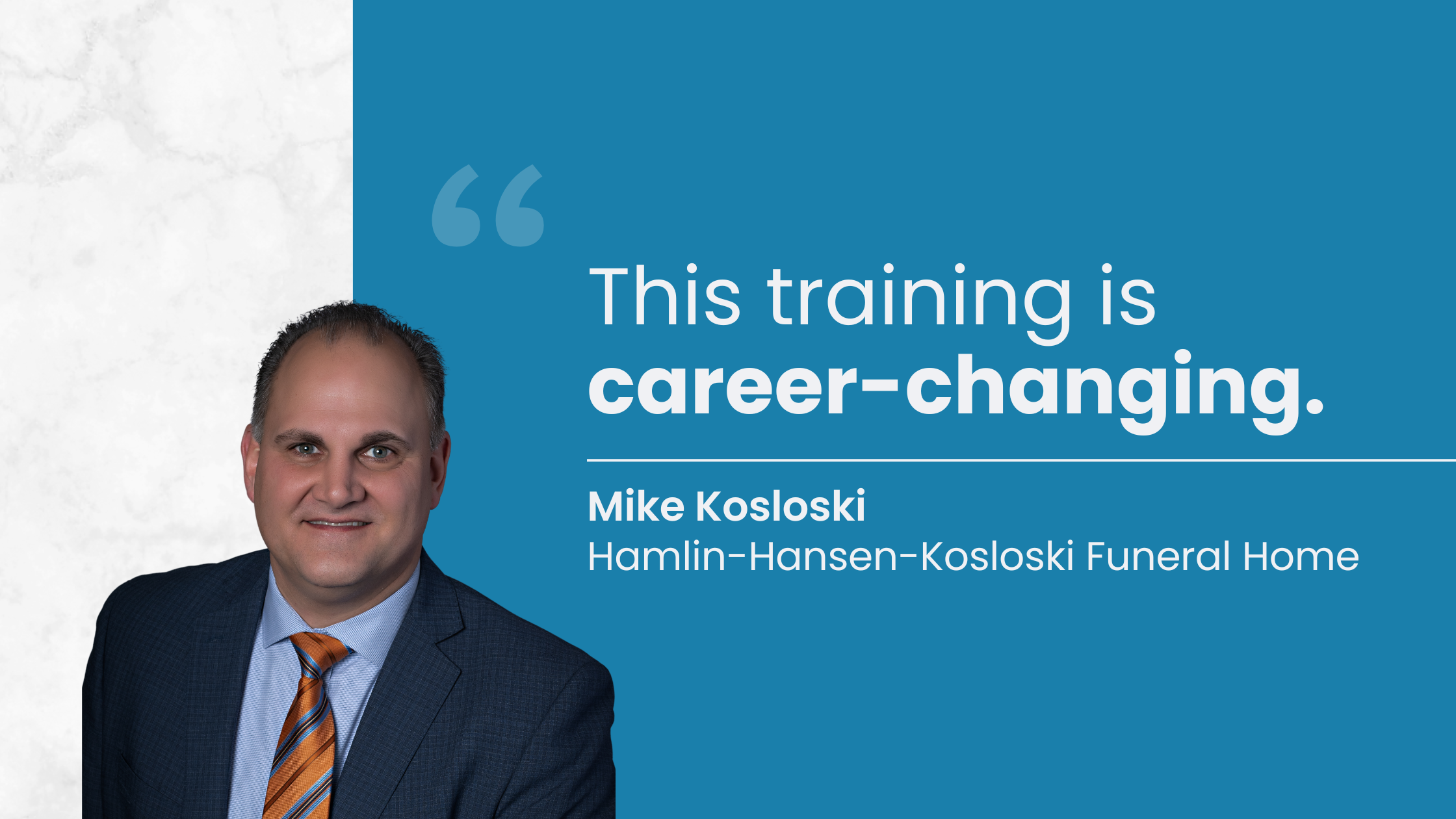
Four things to look for in an online preplanning tool for your funeral home
In 2022, eCommerce sales hit 1 trillion dollars.
That means more people than ever before are shopping online for basic necessities and large purchases. The pandemic of 2020 certainly exacerbated online eCommerce sales. In 2019, online sales were $570 million, but they skyrocketed to $811 million in 2020 and $960 million in 2021.
 Americans today spend more time on the internet for work, study, and pleasure than ever before. There are also more opportunities to purchase goods and services online, from everyday purchases (like groceries) to big ticket items (like homes). The fact is, people are more comfortable with making purchases online. In fact, a recent study shows that 87% of consumers want to research online before making a purchase. To do this, they primarily use a company’s website to find information. It’s probably safe to assume you have a website and would agree that it has replaced the Yellow Pages in how people find your funeral home. That said, how often is your website helping consumers interact with your business to make a purchase?
Americans today spend more time on the internet for work, study, and pleasure than ever before. There are also more opportunities to purchase goods and services online, from everyday purchases (like groceries) to big ticket items (like homes). The fact is, people are more comfortable with making purchases online. In fact, a recent study shows that 87% of consumers want to research online before making a purchase. To do this, they primarily use a company’s website to find information. It’s probably safe to assume you have a website and would agree that it has replaced the Yellow Pages in how people find your funeral home. That said, how often is your website helping consumers interact with your business to make a purchase?
Almost every industry is already providing an eCommerce experience, and today’s consumers have been conditioned to expect one – even in industries they’ve never worked with before – like the funeral profession.
More and more families today want to fully preplan and pay for their own funeral online. Are you giving them the option? In short, to remain competitive in today’s market, every funeral home should have some sort of eCommerce tool that allows consumers to purchase funeral or cremation prearrangements online. We believe in this so strongly that we are offering our eCommerce tool, Arrangement Guide™, at no monthly cost once it is set up. Regardless of whether you use our tool, though, let’s discuss some criteria to help you select the best tool for your business.
1. Your tool should accept payments online.
 Let’s use our imaginations for a second. Pretend that you’re in the market to buy a new TV. You’ve done all your research, and you are now ready to make a purchase. You head over to BestBuy.com and add the TV to your cart. You then get prompted to add surround sound and think, “Sure, why not?” and add it to your cart. Next, you provide all the necessary personal information for the purchase. Finally, you land on the last screen where you expect to enter your payment information only to receive a message saying that you must come into the store to finalize your purchase. Wouldn’t you be a little annoyed by this?
Let’s use our imaginations for a second. Pretend that you’re in the market to buy a new TV. You’ve done all your research, and you are now ready to make a purchase. You head over to BestBuy.com and add the TV to your cart. You then get prompted to add surround sound and think, “Sure, why not?” and add it to your cart. Next, you provide all the necessary personal information for the purchase. Finally, you land on the last screen where you expect to enter your payment information only to receive a message saying that you must come into the store to finalize your purchase. Wouldn’t you be a little annoyed by this?
It seems obvious that an eCommerce tool would accept payments. But the truth is, the story above is the digital preplanning experience for families today. A lot of funeral eCommerce tools don’t even provide the option to pay for at-need policies, let alone preneed ones. Families feel left out or overlooked if there’s no option for them to plan and pay online, which didn’t sit well with us. Arrangement Guide gives families more options to preplan and pay online.
2. Your tool should promote the value of a service.
Unsurprisingly, eCommerce is often associated with direct cremations. Virtually every eCommerce tool has their first question as, “Do you want to be buried or cremated?” Most consumers do not understand the value a funeral home provides for them, so they start with the cheapest option in mind. This is why you have funeral directors on staff to help educate the consumer.
The tension we are now experiencing is that consumers want to interact with your business digitally and do not want to speak with a funeral director. That’s why it’s essential to select an eCommerce tool that can bridge this gap by placing the value your business provides at the front and center of the buying experience, helping educate your customers as they walk through the buying process.
When an eCommerce tool leads with disposition, it solidifies in the minds of consumers that disposition should be their primary consideration and leads them down the cheapest path. We believe that disposition should be a secondary consideration after making choices for gathering. We have structured our questions with the principles of Dr. Alan Wolfelt in mind to help guide the consumer on the importance of gathering together during the grieving process. Only after these questions do we ask whether they would prefer burial or cremation. This helps the consumer understand that while they might prefer a cremation, it is still possible to have a viewing and service.
3. Your tool should be useful online or in-person.
Another fallacy that our industry has come to believe is that consumers are strictly in-person or online shoppers. Let’s go back to our example of purchasing of a TV. After having done your research, you now have a TV in mind to purchase. Before you pull the trigger, however, you decide you want to see the quality for yourself. You go into the store where you are able to talk to a sales representative who answers all your questions, and you’re now feeling good about purchasing. As you check out, the sales representative asks, “Would you like to carry it out or have it shipped?” You realize that the 80” TV won’t fit into your sedan, and you didn’t think to bring the hearse. You tell the sales rep that you would like to have it shipped. He then takes your email address where you receive an email with a tracking notification.
You’ve probably experienced something like the above scenario before. In it, we see a blended experience of online and in-person interactions. We started the process online (research), then went into the store to talk to someone in person (sales representative), and then finished online again (shipment tracker). Because it’s so prevalent in other industries, consumers have begun to expect blended options from all businesses. This means your eCommerce tool needs to be set up in a way that allows your staff to pick up with the prearrangement plan right where the family left off. So, if a consumer starts their plans online but does not finish, a preneed sales professional should be able to easily follow up with those leads and help them complete their plans. The lead’s plans will appear in Funeral Directors Life’s digital contract sales software, DIGicon®, so that you or a staff member can easily help these families finalize their plans in person, over the phone, or via Zoom meeting.
4. Your tool should generate FREE leads for your preneed program.
 Finally, your online planning tool should complement your preneed program and provide a steady source of qualified leads for your sales professionals to follow up with. We believe that since you’ve already invested in your online planning tool’s setup costs, those leads should be provided to you for free.
Finally, your online planning tool should complement your preneed program and provide a steady source of qualified leads for your sales professionals to follow up with. We believe that since you’ve already invested in your online planning tool’s setup costs, those leads should be provided to you for free.
If you are having to pay for a setup fee, monthly subscription costs, AND leads, we think that’s too much. Once you’ve paid the one-time setup fee for the Arrangement Guide, your online planning and funding tool has no monthly subscription costs and no charge for leads. Plus, if the link to your tool is on your website (a place where families will start the research process), you can generate passive leads without having to do much marketing for your tool. We do recommend you market it on social media and Google, though. Our digital marketing specialists can help set those ads up and get more people to your tool.
Ready to offer an online planning and funding option for your families?
Reach families in your community before low-cost cremation providers or your competitors. Request a demo of Arrangement Guide and get the eCommerce tool of your dreams.





